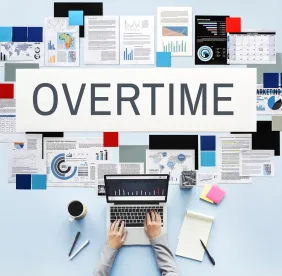Now that the DOL has released its salary threshold for “white collar” overtime exempt employees (from $23,660 to $47,476 annually, effective December 1, 2016), employers may be faced with decisions to change the pay classification of employees under the Fair Labor Standards Act. For example, will an employee who is currently classified as exempt from overtime receive a pay raise to meet the new salaried threshold, or will the employee be re-classified as nonexempt? The numbers are important. But, in addition to crunching the numbers – which typically involves weighing the economics of a salary increase versus having the employee on the clock at an hourly rate (and at time and one- half for potential overtime) - there is another, equally important issue to review for exempt employees: the job duties tests.
The DOL did not change the job duties tests for white collar exemptions at this time. That said, it would be short-sighted to focus exclusively on numbers for decision making. Before any money is spent on a significant salary increase, employers should audit whether the employees being considered for potential pay increases actually are assigned and perform job duties that qualify them for the white collar exempt job they currently occupy.
Job titles are not determinative. As companies transition to the new DOL regulation, they should not automatically assume that an exempt employee who was originally correctly classified continues to be. Unfortunately, sometimes, employees are just assumed to be continuously correctly classified because “we’ve always done it this way.”
The “big three” white collar exemption categories are: the professional, the executive, and the administrative exemptions. The highly-compensated employee, the outside sales exemption, and the computer professional also have exempt status, but for the sake of space, this post focuses on these three categories, which can be challenging to analyze.
Generally speaking, the professional exemption requires that the employee perform work that is predominantly intellectual and that required him or her to pursue lengthy, specialized instruction in an advanced field of science or learning. This type of work requires consistent exercise of professional skills and judgment. The executive exemption generally requires that the employee manage an enterprise or a department and that s/he direct the work of at least two or more employees, as well as have significant input into, or the authority to, hire and fire. To be within the administrative exemption, the employee should perform office or non-manual work that is directly related to the management of, or the general business operations of, the employer or the employer’s customers. This employee should exercise discretion and independent judgment over “matters of significance.”
There are many other fine points that the DOL regulations fill in, but the above concepts can help determine whether an employee being considered for a salary increase was actually an exempt employee in the first place. If it is not an exempt position, paying an increased salary just to meet the new DOL salary threshold may not be the best step, economically speaking.
For employees who meet the job duties tests and that the employer continues to treat as exempt, the new minimum salary amount must be met. Otherwise, the employee will be entitled to overtime pay for hours worked over 40 in each week.




 />i
/>i

